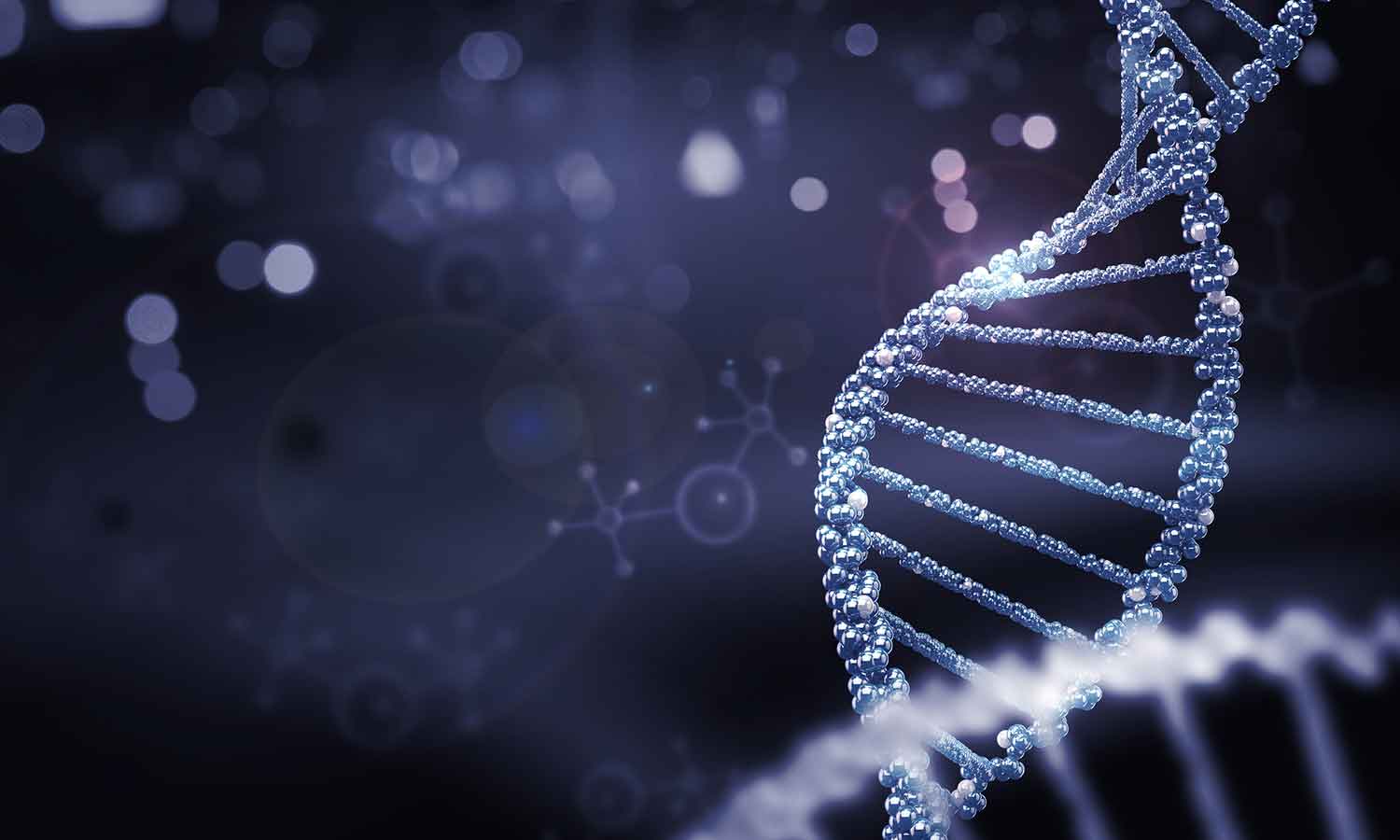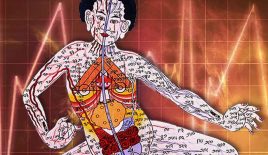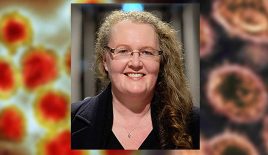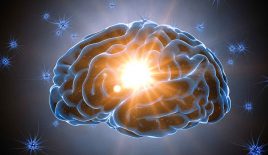‘The Human Genome Project’ – The Big Cosmic Joke!
 The results of the Genome project reveal that there are only about 34,000 genes in the human genome. Two thirds of the anticipated genes do not exist!
The results of the Genome project reveal that there are only about 34,000 genes in the human genome. Two thirds of the anticipated genes do not exist!
How can we account for the complexity of a genetically-controlled human when there are not even enough genes to code just for the proteins?
More humiliating to the dogma of our belief in genetic determinacy is the fact that there is not much difference in the total number of genes found in humans and those found in primitive organisms populating the planet.
Recently, biologists completed mapping the genomes of two of the most studied animal models in genetic research, the fruit fly and a microscopic roundworm (Caenorhabditis elegans).
The primitive Caenorhabditis worm serves as a perfect model to study the role of genes in development and behavior. This rapidly growing and reproducing primitive organism has a precisely patterned body comprised of exactly 969 cells, a simple brain of about 302 ordered cells, it expresses a unique repertoire of behaviors, and most importantly, it is amenable to genetic experimentation. The Caenorhabditis genome is comprised of over 18,000 genes. The 50+ trillion-celled human body has a genome with only 15,000 more genes than the lowly, spineless, microscopic roundworm.
Obviously, the complexity of organisms is not reflected in the complexity of its genes.
For example the fruit fly genome was recently defined to consist of 13,000 genes. The eye of the fruit fly is comprised of more cells than are found in the entire Caenorhabditis worm. Profoundly more complex in structure and behavior than the microscopic roundworm, the fruit fly has 5000 fewer genes!!
The Human Genome Project was a global effort dedicated to deciphering the human genetic code. It was thought the completed human blueprint would provide science with all the necessary information to “cure” all of mankind’s ills. It was further assumed that an awareness of the human genetic code mechanism would enable scientists to create a Mozart or another Einstein.
The “failure” of the genome results to conform to our expectations reveals that our expectations of how biology “works” are clearly based upon incorrect assumptions or information.
Our “belief” in the concept of genetic determinism is fundamentally flawed! We cannot truly attribute the character of our lives to be the consequence of genetic “programming.” The genome results force us to reconsider the question: “From whence do we acquire our biological complexity?”
In a commentary on the surprising results of the Human Genome study, David Baltimore, one of the world’s most prominent geneticists and Nobel prize winner, addressed this issue of complexity:
“But unless the human genome contains a lot of genes that are opaque to our computers, it is clear that we do not gain our undoubted complexity over worms and plants by using more genes. Understanding what does give us our complexity-our enormous behavioral repertoire, ability to produce conscious action, remarkable physical coordination, precisely tuned alterations in response to external variations of the environment, learning, memory…need I go on?-remains a challenge for the future.” (Nature 409:816, 2001)
Scientists have continuously touted that our biological fates are written in our genes. In the face of that belief, the Universe humors us with a cosmic joke: The “control” of life is not in the genes.
Of course the most interesting consequence of the project’s results is that we must now face that “challenge for the future” Baltimore alluded to.
What does “control” our biology, if not the genes?
Over the last number of years, science and the press’ emphasis on the “power” of genes has overshadowed the brilliant work of many biologists that reveal a radically different understanding concerning organismal expression. Emerging at the cutting edge of cell science is the recognition that the environment, and more specifically, our perception of the environment, directly controls our behavior and gene activity.
The molecular mechanisms by which animals, from single cells to humans, respond to environmental stimuli and activate appropriate physiological and behavioral responses have recently been identified. Cells utilize these mechanisms in order to dynamically “adapt” their structure and function to accommodate ever-changing environmental demands. The process of adaptation is mediated by the cell membrane (the skin of the cell), which serves as the equivalent of the cell’s “brain.” Cell membranes recognize environmental “signals” through the activity of receptor proteins. Receptors recognize both physical (e.g., chemicals, ions) and energetic (e.g., electromagnetic, scalar forces) signals.
Environmental signals “activate” receptor proteins causing them to bind with complementary effector proteins. Effector proteins are “switches” that control the cell’s behavior. Receptor-effector proteins provide the cell with awareness through physical sensation. By strict definition, these membrane protein complexes represent molecular units of perception. These membrane perception molecules also control gene transcription (the turning on and off of gene programs) and have recently been linked to adaptive mutations (genetic alterations that rewrite the DNAcode in response to stress).
The cell membrane is a structural and functional homologue (equivalent) of a computer chip, while the nucleus represents a read-write hard disk loaded with genetic programs. Organismal evolution, resulting from increasing the number of membrane perception units, would be modeled using fractal geometry. Reiterated fractal patterns enable a cross-referencing of structure and function among three levels of biological organization: the cell, the multicellular organism and societal evolution. Through fractal mathematics we are provided with valuable insight into the past and future of evolution.
The environment, through the act of perception, controls behavior, gene activity and even the rewriting of the genetic code. Cells “learn” (evolve) by creating new perception proteins in response to novel environmental experiences. “Learned” perceptions, especially those derived from indirect experiences (e.g., parental, peer and academic education), may be based upon incorrect information or faulty interpretations. Since they may or may not be “true,” perceptions are in reality-beliefs!
Our new scientific knowledge is returning to an ancient awareness of the power of belief.
Beliefs are indeed powerful…whether they are true or false. While we have always heard of the “power of positive thinking,” the problem is negative thinking is just as powerful, though in the “opposite” direction!
Problems encountered in health and in the unfolding of our lives are generally connected to the “misperceptions” acquired in our learning experiences.
The wonderful part of the story is that perceptions can be relearned!
We can reshape our lives in retraining our consciousness. This is a reflection of the ageless wisdom that has been passed down to us and is now being recognized in cellular biology.
An understanding of the newly described cell-control mechanisms will cause as profound a shift in biological belief as the quantum revolution caused in physics.
Enjoyed this article and want to know more? Here are some easy steps you can take right now…
- Book a life changing “remote healing session” with Soul Guidance with Jaime: https://www.energytherapy.biz/energy-healing-with-jaime-tanna/
- Join Jaime’s fantastic 1 year Energy Coaching Program: Total Frequency Shift — Discover Radiant Health & Freedom
- Sign up for Jaime’s exciting new substack at https://energytherapy.substack.com/https://energytherapy.substack.com/



















































